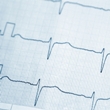Heart rate stress test
Heart rate stress test
Natural Standard Monograph, Copyright © 2013 (www.naturalstandard.com). Commercial distribution prohibited. This monograph is intended for informational purposes only, and should not be interpreted as specific medical advice. You should consult with a qualified healthcare provider before making decisions about therapies and/or health conditions.
Related Terms
Cardiac stress test, ECG, electrocardiogram, HRmax, maximum heart rate, MHR.
Background
The heart rate stress test, also called a cardiac stress test, is a tool used to estimate the upper limit that a patient's heart can safely beat during physical activity within a short period of time, a measure called the maximum heart rate. The maximum heart rate is sometimes abbreviated as HRmax or MHR. The heart rate stress test also compares the rate that the heart beats at rest versus during exercise. This upper limit is partially determined by blood flow to one part of the heart.
Calculating a person's maximum heart rate through a heart rate stress test or equation has been of interest to medical science, in particular exercise physiology, since the early 1930s. Though other methods exist, the heart rate stress test is considered the most reliable and accurate means of safely measuring the maximum heart rate.
The heart rate stress test is sometimes used to estimate the physical fitness of a person and can be used by health care professionals such as physical therapists, to plan the type and duration of exercise that a person may need.
The heart rate stress test is part of the procedure for diagnosing coronary artery disease and possible causes of chest pain. The test is also part of the standard evaluation of determining the likelihood that a patient will have a heart attack.
The test is also given to evaluate how effective treatment for a heart condition has been and to estimate the patient's health prospects in the future.
Technique
The heart rate stress test involves exercising while the heart's activity is monitored by an electrocardiogram (ECG). Small, circular pads called electrodes are painlessly placed on the body. The electrodes monitor the electrical activity of the heart and report this data to a machine through a cord.
The individual then begins exercising, usually on a treadmill, while the ECG records changes in the heart's activity. During the test, the difficulty of exercise is slowly increased until the patient reaches a target heart rate, is too tired to continue the exercise, or until the ECG detects certain changes in the heart's patterns. The highest number of beats recorded by the patient's heart during the minute before stopping the test is then recorded.
Theory
A heart rate stress test may reveal crucial information about functioning of the heart. The test may offer hints that a patient has a blocked artery that the heart is not properly pumping blood, or that sections of the heart are no longer capable of contracting. The test, if performed two or more times, can also help tell doctors if a particular treatment is helping to improve a patient's heart disorder.
Safety
Exercising to the point of or going beyond the number of beats per minute determined in the heart rate stress test is not recommended. This type of exertion causes the heart to go into fibrillation, a state where the heart cannot move normally and the blood is not pumped efficiently through the body. Exceeding the number determined from the heart rate stress test may have serious medical consequences, including possibly death.
Individuals undergoing the heart rate stress test in a healthcare setting should immediately tell an attendant if chest pain is experienced during the procedure.
Author Information
This information has been edited and peer-reviewed by contributors to the Natural Standard Research Collaboration (www.naturalstandard.com).
Bibliography
Natural Standard developed the above evidence-based information based on a thorough systematic review of the available scientific articles. For comprehensive information about alternative and complementary therapies on the professional level, go to www.naturalstandard.com. Selected references are listed below.
American Heart Association. www.americanheart.org.
National Center for Chronic Disease Prevention and Health Promotion. www.cdc.gov/nccdphp.
National Heart Blood and Lung Institute. www.nhlbi.nih.gov.
Copyright © 2013 Natural Standard (www.naturalstandard.com)
The information in this monograph is intended for informational purposes only, and is meant to help users better understand health concerns. Information is based on review of scientific research data, historical practice patterns, and clinical experience. This information should not be interpreted as specific medical advice. Users should consult with a qualified healthcare provider for specific questions regarding therapies, diagnosis and/or health conditions, prior to making therapeutic decisions.
Updated:
March 22, 2017
